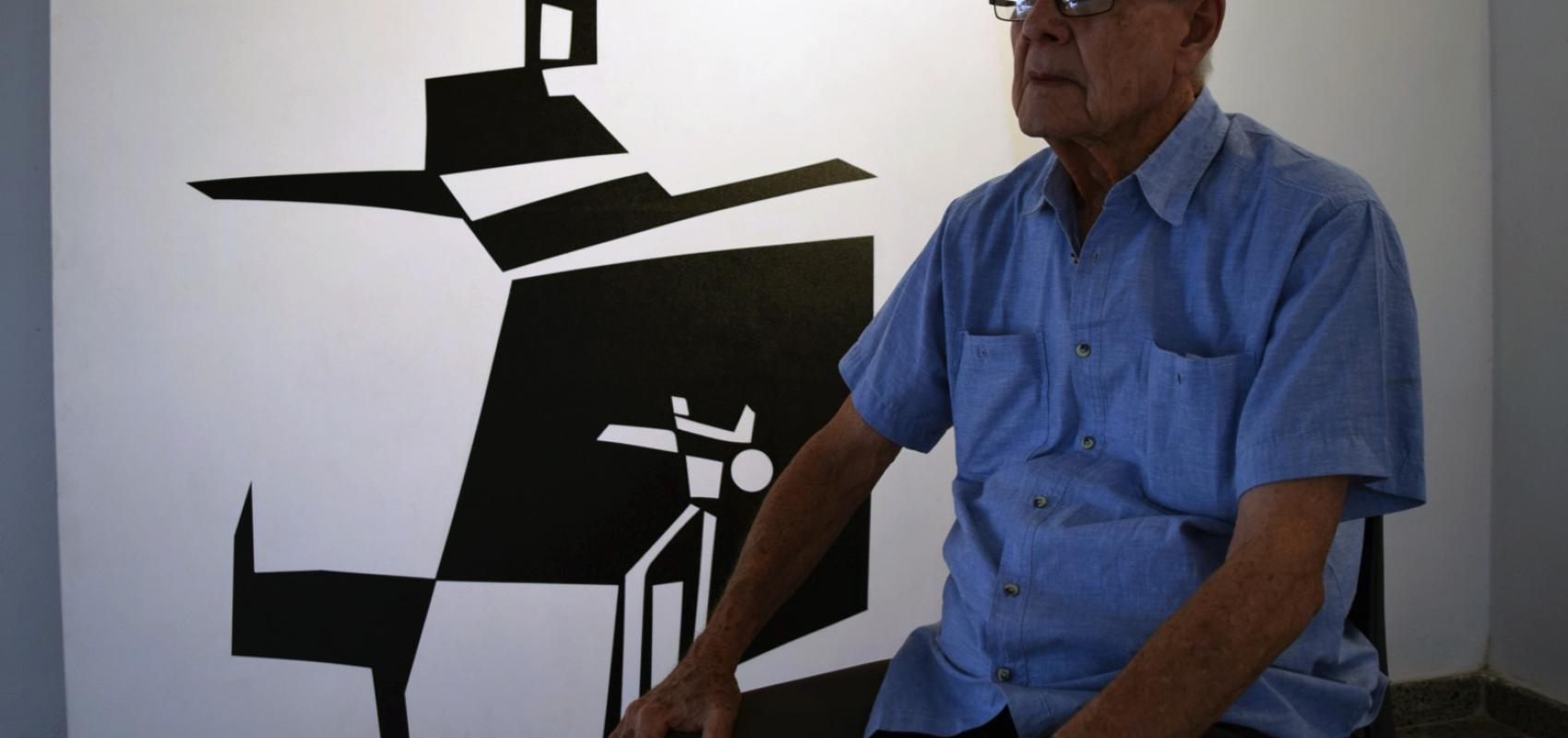The death of Cuban painter, poet, designer and editor Pedro de Oraa has shocked the art world inside and outside Cuba. A member of the famous "Group of 11th", the creator left a courageous imprint that influenced those who chose abstractionism as a method to express their emotions on canvas and in dissimilar formats.
Such is the case of Pinar del Rio-based artist Juan Suarez Blanco, with whom Maxima gallery talked about the creative feelings of Oraa, winner of the National Plastic Arts Award in 2015, one of the indispensable men to talk about the renovating force that Cuban art means in its multiple alternatives.
As an abstract painter, what richness did you see in Pedro de Oraa's work?
His talent was always opening new doors, experimenting, always demanding. He will not be the last of the exponents of the concrete abstract, because when you say the last it seems as if painting ends. For me he is still first.
I had the opportunity to meet him in 2004 at an exhibition of mine, where we exchanged and I could see that he was an extremely simple person, but with an incredible culture with whom you could talk about any subject, not only painting.
That first meeting marked me a lot. Then I noticed that he always appeared in my exhibitions, he was following my work since that stage when I started to make abstract art, during the early 2000s. Whenever I had an exhibition in Havana he would show up and we would talk, so I was not his classroom student, but I was his student of exchange and encounter.
Do you remember any advice or principle you followed from Oraa in art?
Pedro's pieces were of much decanting, he went to the essences, he did not ramble on the canvas, he went to concretize things, hence the concrete art.
It is a very studied, reflected work, which can take months in the thought process and at the time of execution. But he was extremely demanding and rigorous in his work, he did not give himself the possibility of doing something that did not satisfy him from the formal point of view, from the point of view of the completion of the painting.
In the essence of his simplicity is his greatness, that level of summary is much more complex than making a loaded piece, where you can go on discoursing, putting elements and symbols.
When you have to say something with the minimum formal, technical and stylistic resources, the work becomes complex because of its decantation, as I said.
Beyond this impetus to go to the minimum, what other characteristics as a painter do you admire in Pedro de Oraa?
I admire the level of his compositions, very well studied and structured, the technical rigor with an impeccable and commendable workmanship, that has marked his disciples and me personally, within the group of current abstract painters.
It is a work where nothing is neglected, he has even made some paintings with an apparent spontaneity and freshness, but you discover that behind all that is the hand of a master who does not neglect anything, a vision of architectural structure, where the work is in communion with the universe.
26/06/2020
Pedro de Oraa, in communion with the universe
Pedro de Oraa, National Prize of Plastic Arts in Cuba in 2015. Photo: taken from the blog Tuyomasyo





